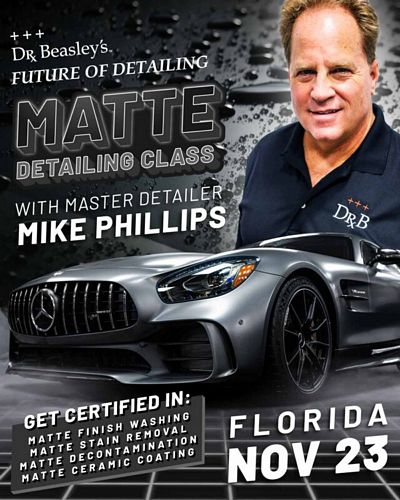- Admin
- #1
- Joined
- May 21, 2021
- Messages
- 1,731
- Reaction score
- 983
- Points
- 113
- Location
- Stuart, Florida
- Website
- themikephillipsforum.com
Video: Using the rotary polisher for major paint correction step
While buffing out this 1957 Chevy Cameo Pickup - I made a short before and after video sharing just ONE topic we cover in all our classes.
Unlike other classes, instead of you sitting in a chair, looking at a PowerPoint presentation, trying to stay awake, I will have a rotary polisher in your hand by 9:00am the first day of class. Guaranteed. And for what it's worth, wouldn't you prefer to take a car detailing class from a person that actually does the thing they are teaching? I knocked this truck out in 16 hours and this was a complicated, multiple-step paint correction and ceramic coating job. Stay tuend for the full write-up and before and after video.
Click the link below to register for this class
Dr. Beasley’s Future of Detailing Advanced Paint Correction Class - $1,400.00
Questions? I love to answer questions about our classes or detailing anything on planet Earth. Just give me a call on my personal cell phone.
760-515-0444
Mike Phillips
While buffing out this 1957 Chevy Cameo Pickup - I made a short before and after video sharing just ONE topic we cover in all our classes.
Unlike other classes, instead of you sitting in a chair, looking at a PowerPoint presentation, trying to stay awake, I will have a rotary polisher in your hand by 9:00am the first day of class. Guaranteed. And for what it's worth, wouldn't you prefer to take a car detailing class from a person that actually does the thing they are teaching? I knocked this truck out in 16 hours and this was a complicated, multiple-step paint correction and ceramic coating job. Stay tuend for the full write-up and before and after video.
Click the link below to register for this class
Dr. Beasley’s Future of Detailing Advanced Paint Correction Class - $1,400.00
Questions? I love to answer questions about our classes or detailing anything on planet Earth. Just give me a call on my personal cell phone.
760-515-0444
Mike Phillips



